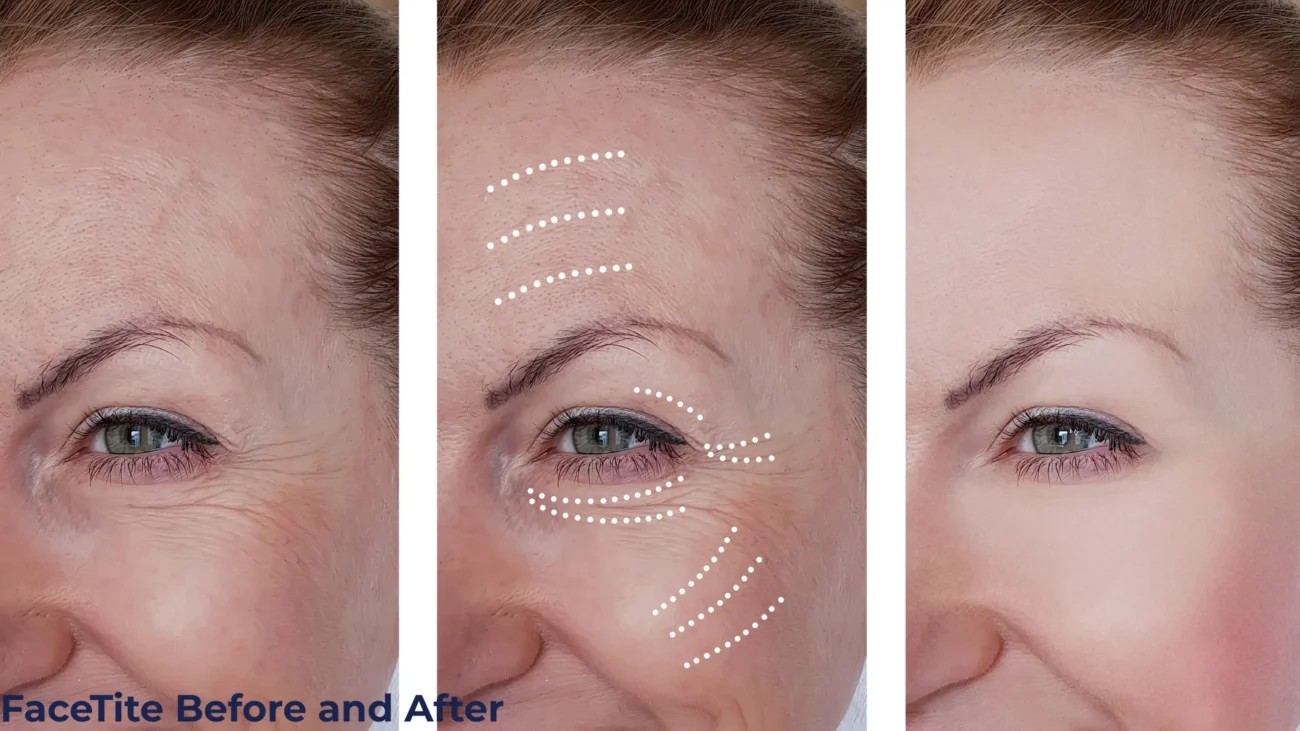Blog
FaceTite: What You Actually Need 2 Know Before This Treatment

Loose skin around your jawline and neck is annoying. You’re not old enough for a facelift, but that sagging situation isn’t fixing itself either. Face creams definitely aren’t doing anything, and you’re getting tired of strategic photo angles. FaceTite keeps popping up as the solution – tighter skin without actual surgery. Sounds convenient, maybe too convenient. Here’s what it actually is and whether it’s worth your time and money.
How It Works – Step by Step
Internal probe under skin + external electrode on surface work together
Tissue heated to 65–70°C from both sides simultaneously
Heat melts fat causing puffiness and sagging
Fibers contract immediately + new collagen forms over months
Treatment Timeline
Local anesthetic injection
Tiny incisions (2–3mm)
RF probe treatment
Compression garment applied
Temperature Control
Auto-shutoff at 65–70°C prevents burns
Dual Action
Melts fat + triggers collagen production
Local Anesthesia
No general anesthesia required
Same Day Home
Walk out same day with compression garment
Who Should Get FaceTite
This works for early to moderate sagging. Pull your skin back gently – if that’s roughly the improvement you want, FaceTite can probably deliver. Need more lift than that? You’re looking at surgery. Most people getting this are 40-65 years old. Younger and your skin probably doesn’t need it. Older and you might have too much laxity for FaceTite to handle alone. Skin quality matters. If your skin still has decent elasticity – pinch it and see if it bounces back reasonably well – you’ll get better results. Hydration levels and sun damage history affect how well the treatment takes. Weight needs to be stable. Planning to lose 20 pounds? Wait until after. Dropping significant weight post-FaceTite means you might end up loose again. Your body composition should be where you want it before committing.
Lifestyle habits count too. Smokers have to quit temporarily – smoking messes with healing and collagen production. Most doctors want you smoke-free for a month before and after. Overall wellness, nutrition, and staying reasonably active all help your body respond better to treatment and heal faster.
What Results You’ll Actually See
FaceTite delivers about 30-35% of what a surgical facelift achieves. Not dramatic transformation – noticeable improvement that looks natural. Your jawline gets more defined. That blurred edge where jaw meets neck sharpens up. Jowls improve but won’t disappear completely unless they were mild. Neck tightening is often the most obvious part – crepey loose skin gets smoother and firmer. Results last 3-5 years typically, sometimes longer if you’re younger or maintain your skin well. You’re still aging though, so think of it as turning back the clock a few years, not stopping it. Some people need touch-ups. If you had significant laxity, one session might get you 70% there and you’ll want another round 6-12 months later.

Cost and What You’re Actually Paying For
Expect $2,500 to $6,000, with most people landing around $3,500-$4,500 for lower face and neck. Adding areas or combining treatments increases the price. Location makes a huge difference. Major cities charge way more than smaller towns. A practice in Manhattan or Beverly Hills will cost significantly more than one in a smaller metro area. Doctor’s experience affects pricing too. Someone who’s done hundreds of these procedures charges more than someone who added it last month. Usually worth paying extra for experience. Ask for an all-in quote. Some places bundle everything, others charge separately for facility fees, anesthesia, and garments. Know the real total before committing. Financing options exist through companies like CareCredit if you need payment plans. Read the terms carefully – interest rates vary.
| Risk | Details |
|---|---|
| Burns | May occur if temperature monitoring fails or the probe stays too long in one area. Modern devices have safeguards, but operator skill matters — always choose an experienced provider. |
| Nerve Damage | Rare but possible. Temporary numbness is common; permanent numbness or slight muscle weakness (like affecting your smile) occurs in less than 1% of cases with qualified practitioners. |
| Infection | Possible anytime skin is broken. Following aftercare instructions carefully keeps this risk low. |
| Contour Irregularities | Sometimes appear as swelling decreases. One side may tighten more, or small bumps can form. Many smooth out naturally, but not always. |
| Skin Discoloration | Occasionally occurs; usually temporary. In some cases, hyperpigmentation may last for several months. |
Finding Someone Who Knows What They’re Doing
Board certification matters. Look for board certification in dermatology or plastic surgery from the American Board of Medical Specialties. Ask about their specific FaceTite experience – how many procedures, how long they’ve offered it, and see their actual patient photos. Stock photos from the device company don’t count. Good consultations feel thorough. If they’re rushing you, promising miracle results, or pushing you to book immediately, leave. Honest providers tell you what FaceTite can and can’t do for your specific situation. Check reviews but don’t obsess over them. Really happy and really unhappy people leave reviews – the middle majority doesn’t bother. Look for complaint patterns rather than individual bad reviews. Trust your gut. If something feels off about the practice or doctor, find someone else. You’re trusting them with your face.
Is FaceTite Worth It
FaceTite works for moderate skin laxity without the commitment of surgery. Results look natural because they develop gradually over months. Whether it’s worth it depends on your situation. Bothered enough to do something but not enough for surgery? FaceTite makes sense. If your expectations are realistic and you can afford it comfortably, it delivers what it promises. Just know the recovery isn’t fun, results take months to fully show, and you’ll keep aging. You might want another treatment eventually. But for the right person at the right time, it’s a solid middle option between doing nothing and going surgical.
A Real Patient’s Experience
Sarah, a 52-year-old marketing director from Chicago, got FaceTite done on her jawline and neck after months of research. “I wasn’t ready for a facelift, but I hated how my neck looked in video calls. The first week was honestly worse than I expected – I looked like I’d been in a car accident. But I took the time off work like they told me to.”
She continues, “Around month four, I started getting comments from friends asking if I’d lost weight or changed my hair. Nobody could pinpoint what was different, which was exactly what I wanted. My jawline is sharper, and that saggy skin under my chin is just gone. Was it worth the $4,200 and a week of looking terrible? For me, absolutely. I just wish someone had been more honest about that first week before I did it.”
- References
InMode – Official FaceTite device manufacturer and technology provider.
American Board of Plastic Surgery – Verify board-certified plastic surgeons.
American Society of Plastic Surgeons – Surgeon directory and patient resources.
American Society for Dermatologic Surgery – Find qualified dermatologic surgeons.
CareCredit – Healthcare financing options for cosmetic procedures.
